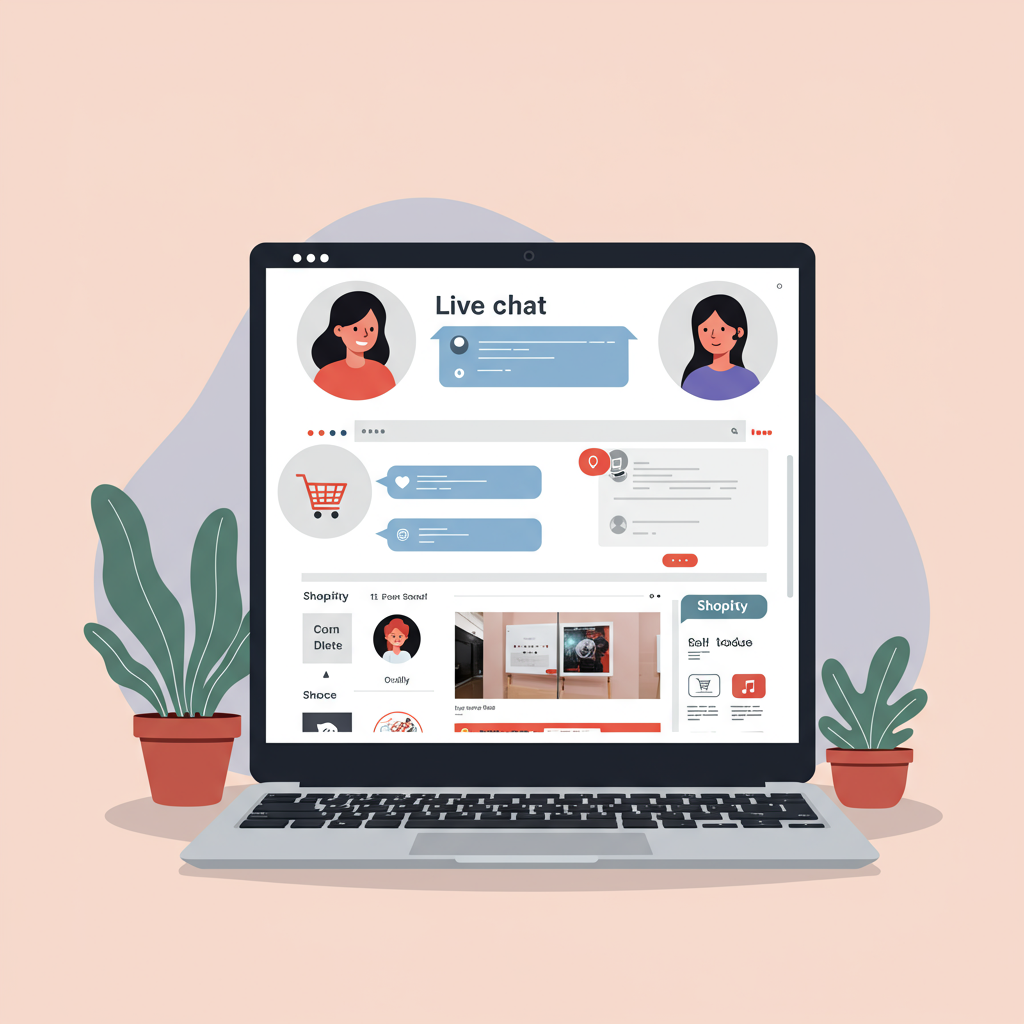Unlock Real-Time Customer Engagement and Boost Your Sales
Hello fellow Shopify merchants! I’m here today to share some insights on a powerful tool that has significantly boosted my customer engagement and sales: live chat support.
In the fast-paced world of e-commerce, customers expect immediate answers. Gone are the days when an email response within 24 hours was considered good service.
I’ve personally found that offering real-time assistance through live chat can be a game-changer for any Shopify store looking to enhance its customer experience.
Think about it: a customer is on your product page, hesitating about a size, a color, or shipping details. A quick chat can resolve their query instantly, preventing them from abandoning their cart.
The benefits are clear: increased conversion rates, higher customer satisfaction, reduced cart abandonment, and a deeper understanding of your customers’ pain points.
So, how do we go about setting up this essential feature on our Shopify stores? I’ll walk you through the options and steps I’ve taken.
Broadly, you have two main avenues for integrating live chat: using Shopify’s native solution, Shopify Inbox, or opting for a third-party live chat application.
Let’s start with Shopify Inbox, which I find to be an excellent choice, especially for those just beginning or looking for a cost-effective solution. It’s built right into your Shopify admin.
To enable Shopify Inbox, simply navigate to your Shopify admin, then go to “Sales channels” and click on “Inbox.” If you haven’t used it before, you’ll be prompted to set it up.
Once enabled, you can customize the chat widget’s appearance to match your brand. I always make sure the colors and branding align perfectly with my store’s theme.
You can set up automated messages, like a welcome message when a customer opens the chat, or even quick replies for frequently asked questions. This saves a lot of time.
Shopify Inbox also allows you to manage conversations directly from your admin or through the Shopify Inbox mobile app, which is incredibly convenient for on-the-go support.
I particularly appreciate its ability to show customer details, like their order history, right within the chat window. This context is invaluable for providing personalized support.
Now, if you’re looking for more advanced features, deeper integrations, or specific functionalities, a third-party live chat app from the Shopify App Store might be a better fit.
There are many excellent options available, such as Tidio, Gorgias, LiveChat, and Zendesk Chat, each offering unique features and pricing structures.
When choosing a third-party app, I recommend considering factors like pricing, available features (e.g., chatbots, CRM integration, analytics), ease of use, and customer reviews.
Once you’ve selected an app, the installation process is typically straightforward. You’ll usually click “Add app” from its listing in the Shopify App Store, and it will guide you through the permissions.
After installation, you’ll configure the chat widget from the app’s dashboard. This is where you’ll set your operating hours, customize the widget’s design, and perhaps set up pre-chat forms.
Many of these apps offer advanced features like proactive chat (where the chat window pops up automatically after a certain time on a page) or AI-powered chatbots to handle common queries.
I’ve found that setting up quick replies for common questions like “What’s your return policy?” or “How long does shipping take?” is a massive time-saver, regardless of the platform you choose.
Training your support agents (even if it’s just you!) on how to use the chat system effectively is crucial. Emphasize quick, clear, and friendly communication.
Always aim for a fast response time. Customers using live chat expect immediate attention. If you can’t respond instantly, set up an away message or direct them to other support channels.
I also make it a point to personalize interactions. Using the customer’s name and referencing their browsing history (if available) can make a huge difference in their experience.
Don’t forget to collect feedback! Many chat apps allow customers to rate their chat experience. This data is invaluable for identifying areas for improvement.
Setting clear expectations about your live chat availability is also important. Display your operating hours prominently on your website or within the chat widget itself.
For me, live chat isn’t just a support channel; it’s a powerful sales tool. I’ve seen direct correlations between chat interactions and completed purchases.
It allows me to address concerns in real-time, upsell or cross-sell relevant products, and build a stronger relationship with my customers.
I encourage you to explore these options and implement live chat on your Shopify store. It’s an investment that truly pays off in customer satisfaction and ultimately, your bottom line.
What do you think about the importance of live chat for e-commerce businesses? I’d love to hear your thoughts!
By providing immediate, personalized support, you’re not just solving problems; you’re building trust and loyalty, which are the cornerstones of a successful online business.
So go ahead, empower your customers with instant support, and watch your Shopify store thrive!






